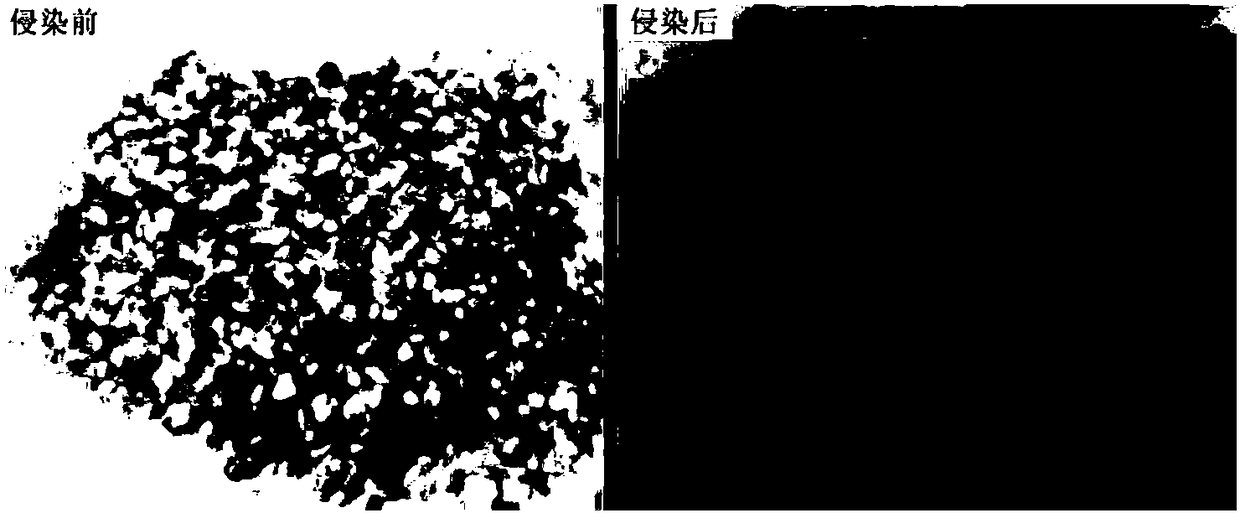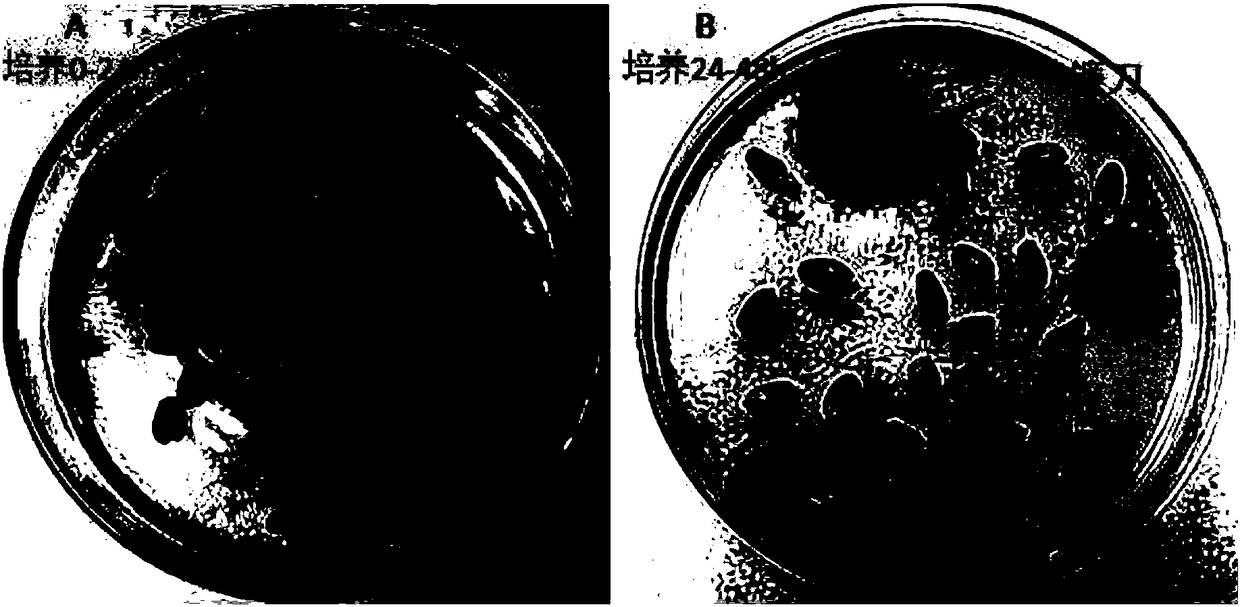Method for restraining fusarium graminearum in food grains through chlorine dioxide
A technology of Fusarium graminearum and grain, which is applied in the field of inhibiting Fusarium graminearum in grain, can solve the problems such as difficult removal of spores, and achieve the effect of low cost, low action concentration and strong controllability
- Summary
- Abstract
- Description
- Claims
- Application Information
AI Technical Summary
Problems solved by technology
Method used
Image
Examples
Embodiment 1
[0024] Example 1: ClO 2 Water Inhibition of Surface and Latent Fusarium graminearum in Contaminated Wheat
[0025] (1) Pour the contaminated wheat material into a light-proof container, mix 100g of wheat material with 300mL of water at a ratio of 1:3, keep the pH of the material liquid at a natural level, and incubate in the container at 28-30°C for 120 minutes.
[0026] (2) Add ClO to the light-proof container in step (1) 2 , so that ClO in the feed solution 2 The added amount reaches 100mg / L. The reaction time at 30°C is 30 minutes. ClO 2 In water, it will react with water to produce hypochlorous acid, and the formed ClO 2 The water system acts on the polluted grain to disinfect and sterilize the microorganisms. (ClO 2 Pass into the container feed liquid, first generate ClO 2 The water system then interacts with and kills Fusarium graminearum in the grain. After the reaction, the exhaust gas passes through the output pipeline to absorb the residual ClO through the so...
Embodiment 2
[0034] Example 2 Effect of infiltration and incubation time on the disinfecting effect of latent Fusarium graminearum in polluted wheat
[0035] On the basis of Example 1, the infiltration incubation time of the contaminated grain in step (1) was adjusted to 30 min, 60 min and 120 min respectively. The results are shown in Table 2 and Figure 4 .
[0036] It was found that the inhibition rate of contaminated wheat could reach 92% when the incubation time was 120min, and the inhibition rates were 60% and 75% when the incubation time was 30min and 60min respectively. It can be seen that adopting the experimental conditions of the present invention (grain is first infiltrated and incubated for 120min according to the ratio of material to liquid at 1:3, and then treated with ClO 2 Concentration of 100mg / L, reaction at 30°C for 30min), can effectively inhibit Fusarium graminearum in polluted grain.
[0037] Table 2 Inhibition rate corresponding to 36-48h culture after treatment ...
Embodiment 3 2
[0039]Example 3 The effect of chlorine dioxide addition on the disinfecting effect of Fusarium graminearum
[0040] On the basis of Example 1, adjust the amount of chlorine dioxide added in the feed liquid, respectively: 60, 80, 100, 120mg / L. The grain was infiltrated and incubated for 120 minutes according to the ratio of material to liquid 1:3, and then with different concentrations of ClO 2 After reacting at 30°C for 30min, it was found that 60, 80mg / L ClO 2 After the treatment, the latent Fusarium graminearum inhibition rate in the polluted wheat was 60% and 75% respectively, and the inhibition rate was between 90%-95% after the concentration treatment of 100-150mg / L, see Table 3 and Figure 5 .
[0041] Table 3 uses different concentrations of chlorine dioxide to treat wheat and cultivate the corresponding inhibition rate for 36-48h
[0042]
PUM
 Login to View More
Login to View More Abstract
Description
Claims
Application Information
 Login to View More
Login to View More - R&D
- Intellectual Property
- Life Sciences
- Materials
- Tech Scout
- Unparalleled Data Quality
- Higher Quality Content
- 60% Fewer Hallucinations
Browse by: Latest US Patents, China's latest patents, Technical Efficacy Thesaurus, Application Domain, Technology Topic, Popular Technical Reports.
© 2025 PatSnap. All rights reserved.Legal|Privacy policy|Modern Slavery Act Transparency Statement|Sitemap|About US| Contact US: help@patsnap.com



